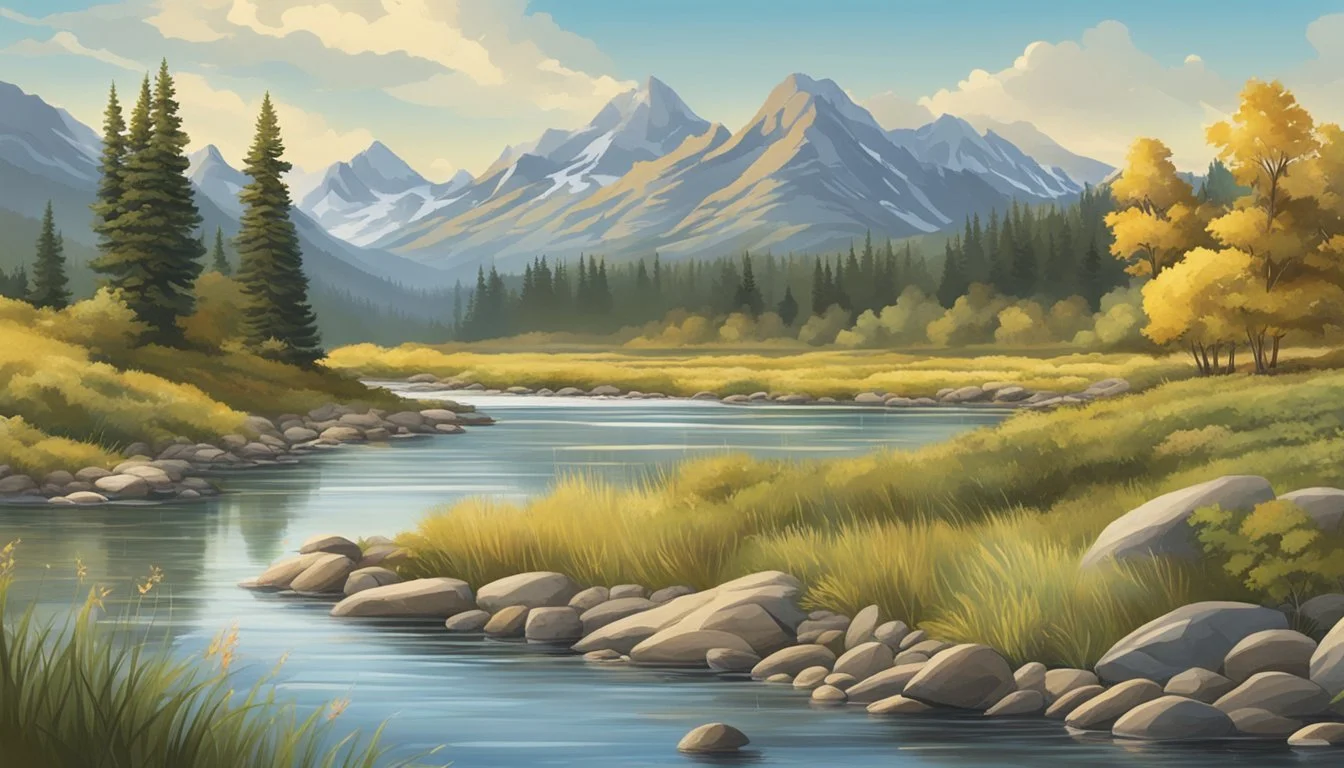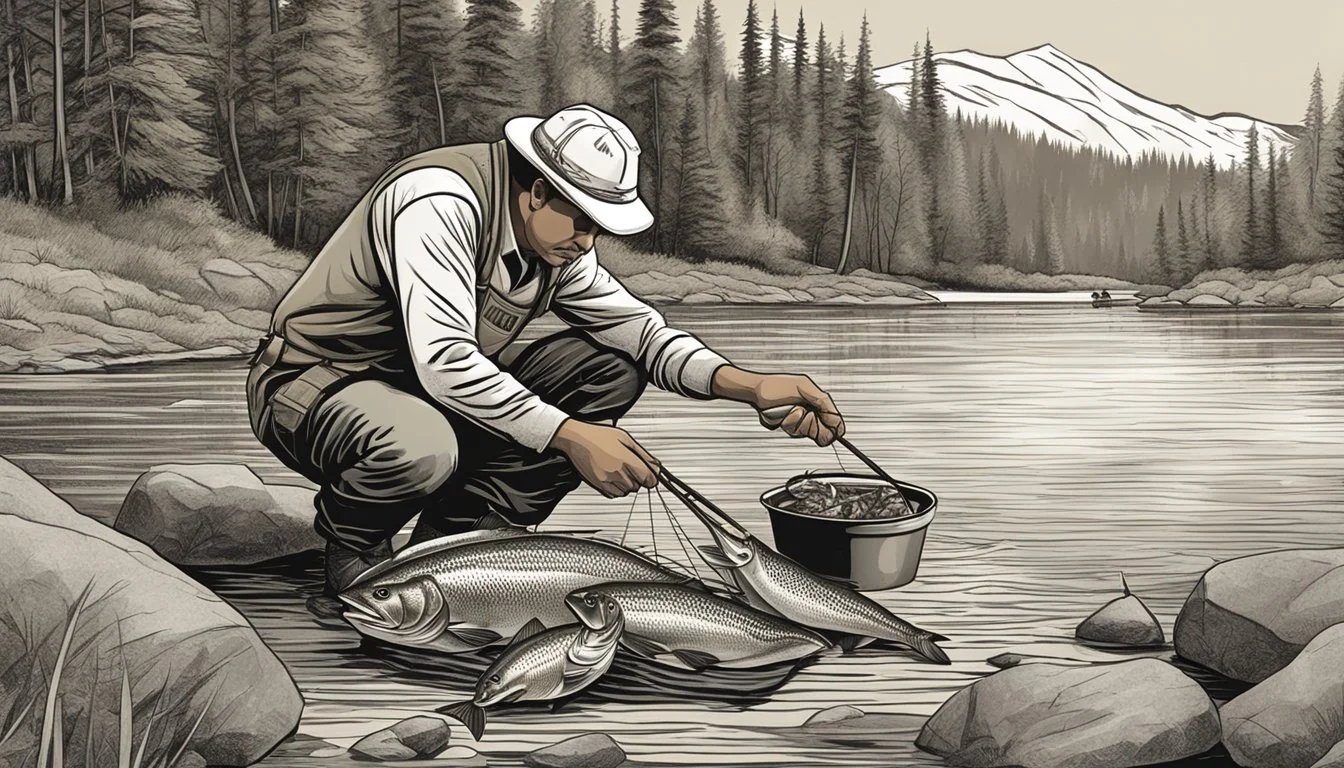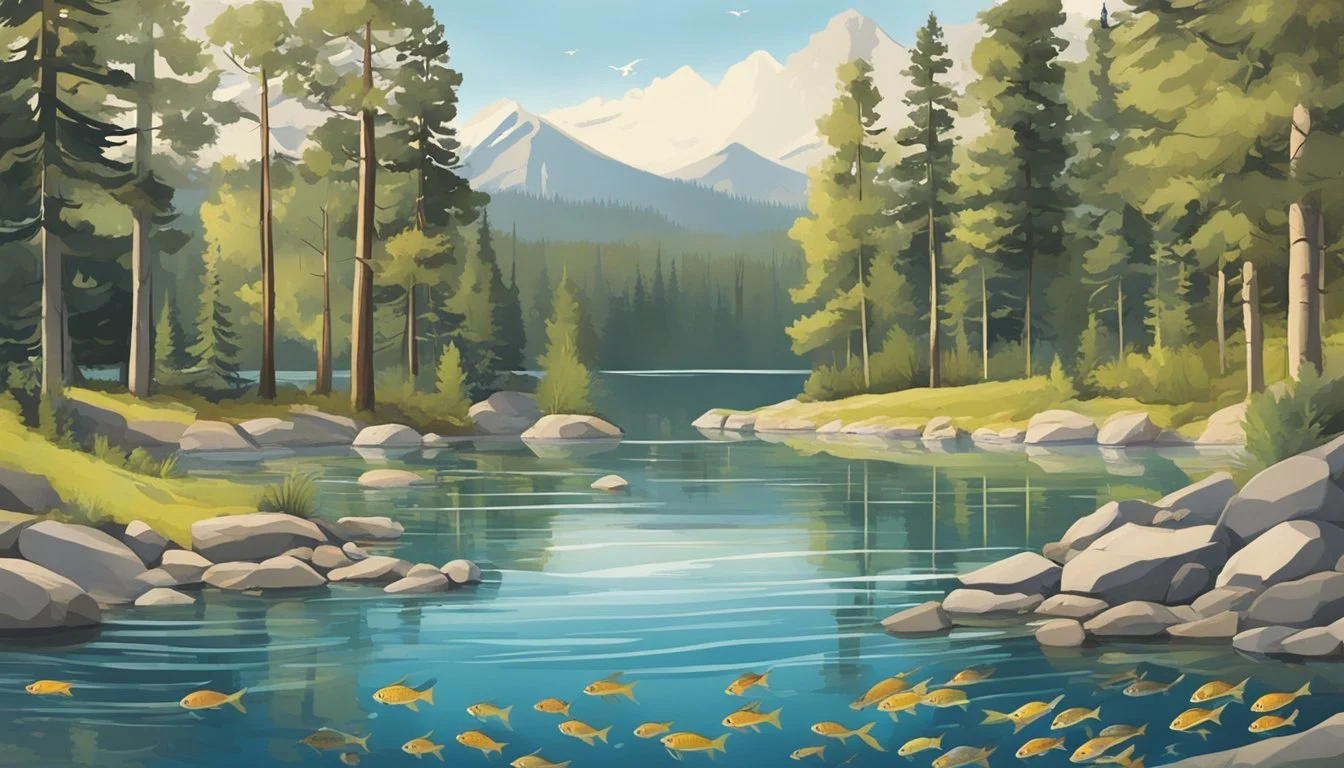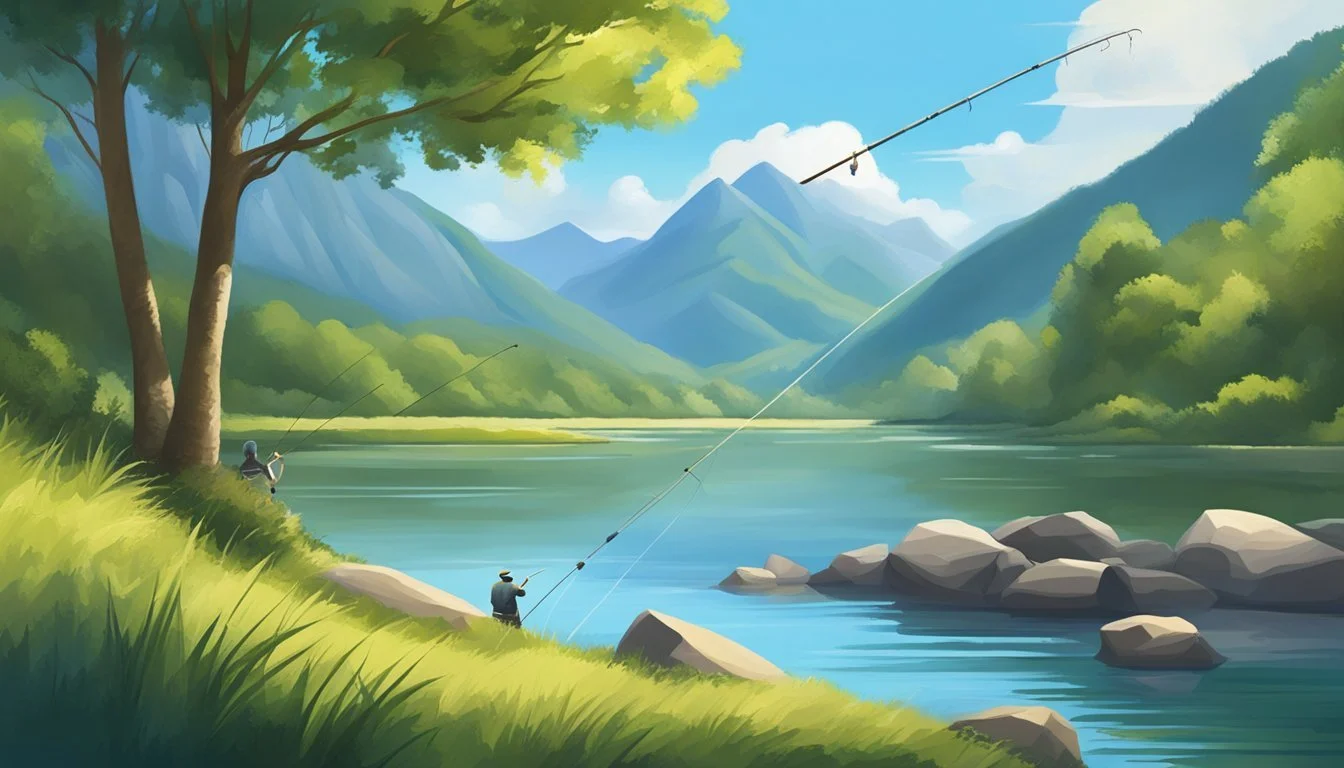Best Fish to Catch and Eat in Montana
A Guide to the State's Delicacies
Montana's diverse water bodies present anglers with opportunities to catch a variety of fish (What wine goes well with fish?), each offering an enjoyable sporting challenge and a unique taste when it comes to the table. The state is particularly renowned for its trout fishing, where species such as rainbow trout, brown trout, cutthroat trout, and lake trout are abundant. These fish are not only a prize for their fight on the line but are also highly sought after for their culinary qualities.
The state's fishing guidelines encourage anglers to enjoy their catch while being mindful of consumption advisories and sustainability. With pristine lakes and rivers, Montana provides both resident and visiting fishermen the chance to experience world-class fishing in an unspoiled natural environment. The clear waters and healthy ecosystems support a healthy food chain, leading to delicious and nutritious fish.
Due to the different habitats and climates within Montana, the best times for fishing vary, with spring and fall generally offering optimal conditions for trout fishing. Understanding the seasonal behaviors of these species greatly increases the odds of a successful outing. Whether frying up a fresh catch or releasing a trophy back into the water, Montana's fishing scene delivers rewarding experiences to both the sport and palate.
Understanding Montana's Fishing Landscape
Montana boasts a diverse aquatic system that offers anglers a remarkable variety of fishing environments and species. Heavily informed by its geography, the state provides a unique fishing experience characterized by the water bodies that dot its terrain and the specific fish species these waters harbor.
Key Water Bodies
Montana's fishing landscape is shaped by an array of lakes, rivers, and streams that provide both native and stocked fish populations. The western Montana region is known for its clear, cold water systems, ideal for trout and other species that require pristine conditions. Key water bodies here include the fabled Flathead Lake and various sections of the Missouri River. In contrast, central Montana features productive reservoirs like the Fort Peck Reservoir, while the eastern drainages offer warmer water habitats conducive to species such as the paddlefish.
Species Distribution
The state's varied aquatic habitats host an extensive distribution of fish species. Montana fish species range from the popular trout variants to the hard-fighting smallmouth bass. In particular, river drainages like the Missouri and the Yellowstone harbor robust populations of the likes of rainbow trout, brown trout, and channel catfish. Notably, the Smith River requires a permit due to its unique management and outstanding fishing opportunities.
Native Species vs Stocked Species
Montana maintains a delicate balance between protecting native species and supplementing populations with stocked species. The native species, such as the westslope cutthroat trout and bull trout, are reflective of the state's commitment to preserving natural habitats. Stocked species are introduced to enhance recreational fishing and often include several trout species. Management efforts ensure that stocking does not negatively impact native fish or their ecosystems, particularly in the delicate stream habitats across the region.
Prime Fish Species for Anglers
Montana offers a rich variety of fish species that are both a thrill to catch and excellent on the table. From the cold, crystal-clear waters that support an array of trout to the warmer lakes with pike and walleye, each region presents opportunities for a memorable fishing experience.
Trout Varieties
Cutthroat Trout: These indigenous trout species come in several subspecies, such as the Westslope Cutthroat Trout and the Yellowstone Cutthroat Trout, both lauded for their distinctive red slash marks on the throat. Cutthroat Trout are particularly popular among fly fishers for their fighting spirit.
Rainbow Trout: Known for their vibrant stripe, Rainbow Trout are abundant in Montana's rivers and are favored for their vigorous fight and delicate flavor when cooked.
Brown Trout: With their buttery brown coloration and potential for substantial size, Brown Trout provide a challenging target for anglers.
Bull Trout: These larger predatory trout are considered a trophy due to their size and are strictly catch-and-release in most Montana waters to protect their populations.
Lake Trout: Dwelling in the deeper and colder lake waters, these trout are sought after for both sport and their suitability for a variety of culinary preparations.
The Appeal of Northern Pike and Walleye
Northern Pike: With their sharp teeth and predatory nature, Northern Pike are a favorite for anglers seeking excitement. They are widely found in Montana's warmer lakes and rivers, growing to notable sizes.
Walleye: Another warm-water species, Walleye are highly prized for their delicate flavor, making them one of the most sought-after table fish. They tend to inhabit the deeper sections of Montana's lakes and reservoirs.
Diversity of Other Game Fish
Montana is not limited to just trout and warm-water predators; it's also home to other game fish:
Mountain Whitefish: An indigenous species, Mountain Whitefish are often underrated but provide enjoyable light-tackle fishing and are excellent when prepared fresh.
Miscellaneous Game Fish: In addition to the premier species, anglers in Montana can find a variety of panfish, catfish, and bass, offering a diversity that caters to many fishing preferences and techniques.
Seasonal Fishing Considerations
In Montana, seasonal changes significantly influence fishing conditions and fish behavior. Anglers should consider both the optimal times to fish and how fish habits shift with the seasons to maximize their success and enjoyment.
Best Times to Fish
Spring and Fall:
The prime seasons to seek trout—including rainbow, cutthroat, brown, and lake trout—in Montana are spring and fall. These seasons offer ideal water temperatures and flows that trout prefer.
Spring: As the water begins to warm, fish become more active and feed vigorously after the winter.
Fall: Cooler temperatures bring trout back to more accessible, shallow waters, creating excellent fishing conditions.
Summer:
Summer months, particularly June through August, are peak times for fly-fishing in Montana. Warmer waters and increased insect activity make this a favorable time, especially for dry fly anglers.
Specific fish to target in the summer include paddlefish, as well as species like grayling, pike, and walleye.
Understanding Fish Behavior By Season
Spring:
Fish emerge from a slower winter metabolism and typically feed more aggressively as they prepare for the spawning season. This is when they are most accessible to anglers.
Increased insect hatches result in active feedings.
Summer:
Fish often seek deeper, cooler water to escape the heat. Anglers may need to adjust strategies—fishing early or late in the day—to avoid sluggish midday behavior.
Fish like trout can be found in faster-moving, oxygen-rich waters.
Fall:
Fish sense the coming winter and increase their feeding to build energy reserves, making them more likely to bite.
Streamers and nymphs become particularly effective as fish bulk up for winter.
Top Fishing Locations in Montana
Montana offers some of the most iconic freshwater fishing spots in the United States, with a variety of rivers and lakes that cater to both the casual and avid angler. From the famed trout waters to lakes brimming with fish populations, these destinations are prime for those seeking a rewarding catch.
Rivers Worth Exploring
Yellowstone River: As the longest undammed river in the contiguous United States, the Yellowstone River is renowned for its high population of cutthroat, rainbow, and brown trout. Accessible from towns like Livingston and Billings, it offers exceptional fishing opportunities.
Missouri River: Near Helena, the Missouri River is another fantastic location for anglers. It is especially known for its blue-ribbon trout fishing, with areas around Craig being particularly productive.
Blackfoot River: Located near Missoula, the Blackfoot River is storied in fly-fishing culture. Anglers here often land robust trout with notable size and fight.
Clark Fork River: Flowing near Missoula, the Clark Fork River harbors healthy numbers of rainbow and brown trout. It's a river that appeals to wade and float fishing enthusiasts.
Bighorn River: Fly-fishers seek out the Bighorn River near Hardin for its consistent hatches and sizable trout, making it one of Montana's top fly-fishing destinations.
Madison River: Originating in Yellowstone National Park and flowing near Bozeman, the Madison River is a standout for its large concentrations of trout and stunning scenery.
Lakes with High Fish Populations
Hebgen Lake: Just outside of Yellowstone National Park, Hebgen Lake is a hotspot for big brown and rainbow trout, attracting both summer and winter anglers.
Flathead Lake: Located in the northwestern part of the state, Flathead Lake is the largest natural freshwater lake west of the Mississippi in the United States and is known for its lake trout.
Georgetown Lake: Near Philipsburg, Georgetown Lake is a high-mountain lake that offers excellent ice fishing for rainbow and brook trout.
Canyon Ferry Lake: Close to Helena, Canyon Ferry Lake is another beloved spot, with a rich population of walleye, rainbow trout, and perch.
Hidden Gems: Lesser-Known Spots
Fishermen seeking solitude or a unique experience might head to less crowded but equally promising locations, such as:
Rock Creek: A tributary of the Clark Fork River, Rock Creek is accessible from Missoula and is known for its wade-friendly fishing conditions and a healthy stock of trout.
North Fork Big Hole River: This hidden stream offers a tranquil fishing experience with a good chance of catching trout in a serene setting.
By visiting these rivers and lakes, anglers can expect thrilling fishing excursions amid the natural beauty of Montana's diverse landscapes.
Fishing Methods and Techniques
In Montana, anglers have a treasure trove of methods and techniques at their disposal for targeting a variety of game fish, each with their own set of regulations and seasonal considerations. Mastery of these methods can significantly enhance the fishing experience.
Fly Fishing Mastery
Fly fishing is an art form in Montana, especially when pursuing species like rainbow trout and cutthroat trout. Anglers should focus on mastering their cast and understanding the life cycle of insects to choose the most effective flies. The following points are key:
Gear: High-quality rods, reels, and wading equipment are essential for maneuvering in various river conditions.
Technique: Practice casting for precision and delicacy, targeting the head of the pool where fish often feed.
Spin Fishing Tactics
Spin fishing stands out for its versatility and effectiveness for a range of species, including pike and bass. Anglers often employ spinners and live minnows to mimic prey. To excel in spin fishing, consider these tips:
Lure Selection: Use a variety of lures to target specific species; brighter colors for murky water, natural for clear.
Retrieval: Adjust the speed and rhythm of lure retrieval to entice a strike, paying attention to the behavior of the fish.
Catch and Release Best Practices
Catch and release is a practice often encouraged to maintain population levels of game fish in Montana. Anglers must be well-versed in these practices to ensure the survival of each fish released:
Handling: Minimize handling time and wet hands before touching a fish to protect its slime coat.
Tools: Use barbless hooks and carry tools like long-nosed pliers for quick and safe hook removal.
Preparing the Catch
When one lands a noteworthy catch in Montana’s waters, preparing the fish properly is crucial for a delectable meal. The process encompasses efficient cleaning and filleting techniques, as well as the application of culinary expertise to enhance the natural flavors of the fish.
Clean and Fillet Techniques
Filleting a fish requires precision and the correct tools. Start by removing the gills and innards, carefully cutting from the underside of the fish up to its head. Rinse the fish thoroughly to remove any residue. To fillet, one should:
Lay the fish on one side and make a diagonal incision behind the gills and pectoral fin down to the backbone.
Turn the knife parallel to the table and slice along the backbone towards the tail, lifting the fillet away from the body.
Flip the fish and repeat on the other side.
For species like perch, the technique is more simplified due to their smaller size. Perch fillets are often smaller and require delicate handling to preserve the meat’s integrity.
Culinary Tips for Freshwater Fish
The flavors of freshwater fish such as salmon, perch, and whitefish can be enhanced with a blend of seasoning. A recommended mix may include:
1/4 tsp celery seed
1/4 tsp dried oregano (how long does dried oregano last?)
1/4 tsp paprika
1/4 tsp sugar
1/4 tsp dried thyme (how long does dried thyme last?)
1/2 tsp garlic powder (how long does garlic powder last?)
Kosher salt (how long does kosher salt last?) and freshly ground pepper to taste
Lightly coat the fillets in cornmeal (how long does cornmeal last?) for a touch of crispiness, which complements the softer textures of freshwater fish. This culinary approach brings out robust flavors, allowing each variety to shine on the plate.
Conservation and Regulations
Montana’s rich fishing resources require careful management to maintain the balance between recreational fishing and wildlife conservation. Adhering to state regulations ensures the protection of diverse species and habitats for future generations.
Understanding State Fishing Laws
Montana Fish, Wildlife and Parks (FWP) sets the fishing regulations to balance sport fishing opportunities with conservation efforts. Anglers should familiarize themselves with the Fishing Districts (Western, Central, or Eastern) they plan to fish within and adhere to the standard regulations for these areas. All fishing seasons, limits, and other rules can be found in detail in the annual Montana Fishing Regulations document, which guides legal fishing practices from March 1 through the end of February the following year.
Key Species Regulations:
Wild Trout: Special regulations in place to preserve populations.
Brook Trout: Often fewer restrictions due to their abundance.
Native Trout: Such as Westslope Cutthroat, may have more stringent regulations to enhance conservation.
Largemouth Bass: Specific bag and size limits apply.
Smallmouth Bass: Regulated differently than largemouth, with separate limits.
Responsible Angling
Responsible angling not only adheres to regulations but also embraces practices that protect the fish and their environments. Anglers should:
Catch and Release: Properly handle and release wild and native trout, practicing catch and release to sustain their populations in rivers like the Bitterroot River and other pristine fishing lakes.
Selective Harvest: Keep only what they can consume and respect the guidelines for species such as brook trout and both largemouth and smallmouth bass to prevent overfishing.
Use Fishing Guides: When possible, hiring knowledgeable local fishing guides can provide insight into responsible practices specific to different fisheries.
Species Preservation: Be aware of and participate in efforts to preserve endangered or threatened species of fish.
Habitat Respect: Maintain a clean angling environment by not disturbing the natural habitat in and around water bodies.
Fish and Wildlife Resources
Montana, often referred to as the "Treasure State," boasts a rich array of wildlife and fish resources, managed to ensure sustainability and public enjoyment. Strategies encompass educational programs and conservation efforts, engaging communities through outreach and fostering an appreciation for the state's natural bounty.
Educational Programs and Services
Montana's Fish, Wildlife & Parks (FWP) provides extensive educational services aimed at informing the public about responsible fishing practices and wildlife conservation. At facilities like Fishtales Outfitting, individuals learn about species-specific angling techniques, habitat preservation, and the ecological impact of invasive species.
Fishing Education: Techniques, regulations, seasonal advice
Wildlife Conservation: Habitat management, species recovery
Community Involvement and Outreach
The FWP actively involves local communities in wildlife and fishery resource management. Outreach programs are designed to create a collaborative environment where residents can contribute to preservation efforts.
Volunteer Programs: Habitat restoration, fish population surveys
Community Events: Fishing clinics, wildlife educational workshops
By participating in these programs, Montanans remain interconnected with the state's wildlife and contribute to its enduring legacy.
Beyond Fishing: Exploring Montana
While Montana is renowned for its fishing opportunities, the state also offers a wide range of other outdoor activities set against the backdrop of its stunning natural scenery.
Additional Outdoor Activities
Montana provides a myriad of activities for outdoor enthusiasts. In the warmer months, visitors can engage in kayaking and white-water rafting in the vigorous rapids of rivers like the Gallatin and the Yellowstone. For equestrian lovers, horseback riding through open meadows and mountainous trails offers a serene connection with nature. In the winter, the state transforms into a white playground perfect for downhill and cross-country skiing, snowboarding, and snowmobiling.
Scenic Touring and Hiking Trails
Yellowstone National Park is perhaps the most iconic scenic area in Montana. With features like Old Faithful and the Grand Prismatic Spring, Yellowstone's geological wonders present myriad photographic opportunities. The park also supports a diverse range of wildlife, including bison, elk, and grizzlies.
Glacier National Park, often called the "Crown of the Continent," offers over 700 miles of trails. It's home to mountain ranges carved by prehistoric ice rivers, with hiking trails ranging from easy strolls like Trail of the Cedars to challenging treks such as the Grinnell Glacier Trail.
Notable Trails in Montana Difficulty Scenery Highlights Trail of the Cedars Easy Ancient cedars, waterfalls Grinnell Glacier Trail Challenging Glaciers, alpine meadows









